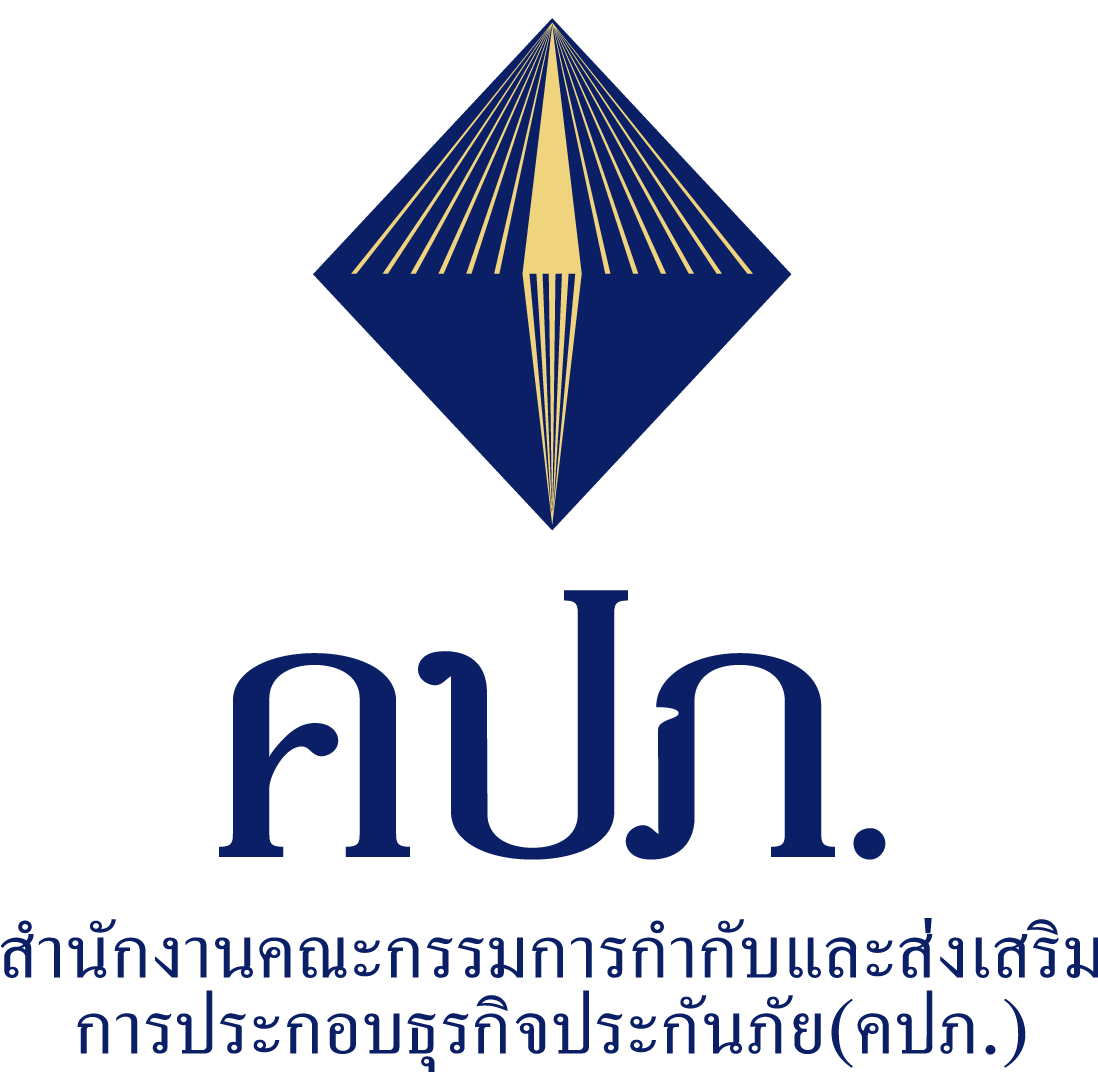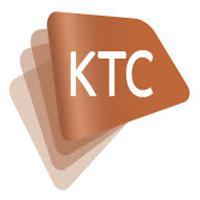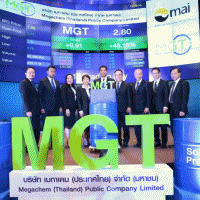- Details
- Category: ไอที-เทคโนฯ
- Published: Thursday, 14 March 2019 18:01
- Hits: 2704

การเข้ารหัสเชิงควอนตัม แนวทางการรับมือกับภัยคุกคามทางไซเบอร์ในอนาคต
ในยุคสมัยที่ความก้าวหน้าทางเทคโนโลยีส่งผลให้มีการเผยแพร่ข้อมูลอยู่แทบจะตลอดเวลา วิธีที่ปลอดภัยในการส่งผ่านข้อมูลสำคัญจึงเป็นที่ต้องการอย่างมาก โดยทาง Cisco มีการคาดการณ์ว่า การรับส่งข้อมูลผ่านโทรศัพท์มือถือจะเพิ่มสูงขึ้นกว่าเจ็ดเท่าในระหว่างปีพ.ศ. 2559 ถึงพ.ศ. 2564 ซึ่งผู้ที่ทำงานด้านไอทีทั้งหลายต่างก็ตระหนักถึงความท้าทายนี้ เห็นได้จากผลการวิจัยล่าสุดของโตชิบาที่แสดงให้เห็นว่า 52% ของธุรกิจในยุโรปมองว่าความปลอดภัยของข้อมูลเป็น 1 ใน 3 การลงทุนที่สำคัญอันดับต้นๆ ในปีนี้ แต่ถึงกระนั้น บรรดาธุรกิจต่างๆ ก็ยังไม่ค่อยรู้จักหรือตระหนักถึงเทรนด์และนวัตกรรมด้านการรักษาความปลอดภัยบนโลกไซเบอร์เท่าไร และนี่คือจุดที่การเข้ารหัสเชิงควอนตัม หรือ Quantum Cryptography เข้ามาตอบโจทย์ ด้วยการใช้หลักการของควอนตัมฟิสิกส์ เทคโนโลยีนี้จะช่วยพาเราเข้าสู่ยุคสมัยของการติดต่อสื่อสารที่มีความปลอดภัยอย่างแท้จริง แต่การเข้ารหัสเชิงควอนตัมคืออะไร สามารถช่วยแก้ปัญหาอะไรได้บ้าง และสามารถเข้ามาเสริมความปลอดภัยให้กับธุรกิจในการรับมือกับภัยคุกคามทางไซเบอร์ที่เกิดขึ้นทั้งในปัจจุบันและอนาคตอย่างไรบ้าง
การเข้ารหัสเชิงควอนตัมทำงานอย่างไร
“พูดง่ายๆ การเข้ารหัสเชิงควอนตัมเป็นวิธีที่ปลอดภัยสำหรับการสร้างและแจกจ่ายกุญแจเข้ารหัสระหว่างสองฝ่ายบนเครือข่ายออปติคัล” ดร. แอนดรูว์ ชีลด์ส ผู้ช่วยกรรมการผู้จัดการ ห้องปฏิบัติการวิจัยของโตชิบาในเคมบริดจ์ กล่าว “ด้วยคุณสมบัติที่คาดเดาสถานะไม่ได้ของอนุภาคอย่าง อิเล็คตรอน หรือ โฟตอน วิทยาการเข้ารหัสเชิงควอนตัมจึงสามารถนำมาใช้สุ่มตัวเลขสำหรับการใช้งานเข้ารหัสต่างๆ นอกจากนี้ การส่งกระแสข้อมูลของโฟตอนเดี่ยวแบบเข้ารหัสผ่านเครือข่ายการสื่อสารแบบออปติคัล ก็จะทำให้สามารถส่งต่อกุญแจดิจิทัลเพื่อไขรหัสและตรวจสอบข้อมูลได้”
เพราะเหตุใดการเข้ารหัสเชิงควอนตัมจึงเป็นที่ต้องการในปัจจุบัน และอนาคต
ทุกวันนี้ การเข้ารหัสกุญแจสาธารณะถือเป็นส่วนสำคัญของการรักษาความปลอดภัยของข้อมูล แต่วิธีการนี้กำลังพบเจออุปสรรคจากกลยุทธ์การโจมตีรูปแบบใหม่ ๆ รวมถึงวิวัฒนาการของคอมพิวเตอร์ควอนตัมที่สุดท้ายแล้วจะทำให้เทคโนโลยีการเข้ารหัสส่วนใหญ่ในปัจจุบันไม่ปลอดภัยอีกต่อไป ความท้าทายที่เกิดขึ้นในปัจจุบันนี้ และความกังวลในอนาคตเกี่ยวกับความปลอดภัยของข้อมูลเป็นสิ่งที่ขับเคลื่อนให้เกิดการนำบริการและวิธีการเข้ารหัสควอนตัมที่เชื่อถือได้มาใช้งาน เพื่อการรักษาความปลอดภัยของข้อมูลที่มีประสิทธิภาพยิ่งขึ้น
และนั่นส่งผลให้มีการคาดการณ์ว่ามูลค่าตลาดของวิทยาการเข้ารหัสเชิงควอนตัมทั่วโลกจะเติบโตจาก 285.7 ล้านเหรียญดอลล่าร์สหรัฐฯในปี 2017 ขึ้นไปสู่ 943.7 ล้านเหรียญในปี 2022 หรือคิดเป็นอัตราการเติบโตเฉลี่ย 27% ต่อปี อย่างไรก็ตาม การเข้ารหัสเชิงควอนตัมก็ยังไม่เป็นที่รู้จักหรือมีการใช้งานอย่างแพร่หลายในสายงานที่เกี่ยวข้อง ซึ่งแน่นอนว่าจุดนี้ไม่ได้ทำให้คุณค่าหรือความจำเป็นของมันลดลงแต่อย่างใด โดยเฉพาะเมื่อเรากำลังก้าวเข้าสู่ยุคควอนตัม
แต่คำถาม คือ อีกนานเท่าไรเราจึงจะได้ใช้การเข้ารหัสเชิงควอนตัม และต้องมีการดำเนินการอย่างไรบ้างเพื่อไปถึงจุดนั้น
เมื่อไรวิทยาการนี้จะเข้าสู่กระแสหลัก
แม้ว่าจะยังไม่ได้มีวางจำหน่ายทั่วไป แต่ตอนนี้นักวิทยาศาสตร์ก็สามารถนำเทคโนโลยีการเข้ารหัสเชิงควอนตัมมาปรับใช้เพื่อแสดงให้เห็นถึงคุณประโยชน์ของมันได้แล้ว โดยเมื่อเร็ว ๆ นี้ ห้องปฏิบัติการวิจัยของโตชิบาในเคมบริดจ์ได้ตีพิมพ์เอกสารทางวิชาการที่บรรยายถึงความสำเร็จในการใช้เกณฑ์วิธีที่เรียกว่า Twin-Field QKD ในการขยายพิสัยการแจกจ่ายกุญแจเข้ารหัสเชิงควอนตัม (Quantum Key Distribution: QKD) ได้มากกว่า 500 กิโลเมตรผ่านเส้นใยโทรคมนาคมมาตรฐาน
“มันเป็นการเปิดโอกาสให้เกิดการติดต่อสื่อสารอย่างปลอดภัยข้ามเมืองใหญ่อย่างระหว่างลอนดอน ปารีส ดับลิน แมนเชสเตอร์ หรืออัมสเตอร์ดัมได้ นอกจากนี้ยังมีโครงการความร่วมมือใหญ่ ๆ อีกมากมาย เช่น โครงการ Innovate UK EQUIP และโปรแกรม Horizon 2020 ของคณะกรรมาธิการสหภาพยุโรปที่กำลังพัฒนาเทคโนโลยีซึ่งจะทำให้การแจกจ่ายกุญแจเข้ารหัสเชิงควอนตัมกลายเป็นเครื่องมือที่องค์กรธุรกิจสามารถเข้าถึงและใช้ประโยชน์จากมันได้” ดร. ชีลด์ส กล่าวเสริม
นอกเหนือจากความต้องการด้านความปลอดภัยในการส่งต่อข้อมูลระหว่างจุด A ไปยังจุด B ของผู้ที่ทำงานในสายไอทีแล้ว การเปลี่ยนแปลงตัวบทกฎหมายเพื่อบังคับให้ข้อมูลส่วนบุคคลถูกจัดเก็บอย่างปลอดภัยก็เป็นเรื่องสำคัญเช่นกัน ซึ่งข้อกำหนดการป้องกันข้อมูลทั่วไป (General Data Protection Regulation: GDPR) เป็นตัวอย่างที่ดีในกรณีนี้ โดยเฉพาะอย่างยิ่งในเวลานี้ที่ภัยคุกคามในโลกไซเบอร์มีความหลากหลายและเพิ่มมากขึ้นเรื่อย ๆ อีกทั้งการดูแลความปลอดภัยของข้อมูลก็เป็นเรื่องยุ่งยาก จึงจำเป็นอย่างยิ่งที่จะต้องมีมาตรการใหม่ในการป้องกันการรั่วไหลของข้อมูล ซึ่ง QKD ถือเป็นเครื่องมือสำคัญในการช่วยให้มั่นใจได้ว่าข้อมูลของเราจะได้รับการป้องกันและดูแลรักษาอย่างปลอดภัย
แผนการในอนาคต
การเข้ารหัสเชิงควอนตัมเป็นเทคโนโลยีที่มีศักยภาพสูงที่จะเข้ามาเป็นหัวใจหลักของการปกป้องดูแลโครงสร้างพื้นฐานในการติดต่อสื่อสารจากการถูกโจมตีทางไซเบอร์ และยังช่วยให้ธุรกิจนำหน้าไปอีกขั้นในการดูแลข้อมูลการดำเนินงานที่สำคัญ การเข้ารหัสเชิงควอนตัมนั้นต่างจากวิธีการรักษาความปลอดภัยแบบอื่นที่มีอยู่ในตอนนี้ตรงที่มันสามารถรักษาความปลอดภัยได้จากการโจมตีทุกรูปแบบทางคณิตศาสตร์และคอมพิวเตอร์ รวมทั้งจากความสามารถในการคำนวณตัวเลขของคอมพิวเตอร์ควอนตัมได้อีกด้วย
แต่ก่อนที่การเข้ารหัสเชิงควอนตัมจะสามารถนำมาใช้ในเชิงพาณิชย์ เกณฑ์วิธี QKD จะต้องถูกทำให้มีมาตรฐานเสียก่อน ต้องทำให้เทคโนโลยีต่าง ๆ สามารถทำงานร่วมกันได้ และจะต้องมีการพัฒนาตลาดส่วนประกอบ รวมไปถึงกรรมวิธีและเทคโนโลยีให้เติบโตยิ่งขึ้น เพื่อช่วยลดค่าใช้จ่ายในการสร้างและนำมาใช้งาน ซึ่งจะทำให้การใช้งานบนโลกออนไลน์ของเราทุกคนมีความปลอดภัยยิ่งขึ้นในอนาคต
-------------------------------
Introducing Quantum Cryptography: The What, When and How
At a time when technological advances have created an almost constant state of data proliferation, the need for the secure transmission of sensitive information has never been more significant. In fact, Cisco predicts mobile data traffic to increase sevenfold between 2016 and 2021. IT decision-makers evidently recognise this challenge, with the latest research from Toshiba revealing that, for over half (52%) of businesses in Europe, data security is a top three investment priority for the year ahead. Yet despite this, businesses often fall behind in keeping themselves aware and ahead of cyber-security trends and developments.
Enter quantum cryptography, which, by harnessing the principles of quantum physics, has the ability to usher in a new age of secure online communication. But what exactly is quantum cryptography, what problems does it solve, and how can it fill the gaps in online defences to enable businesses to stay one step ahead of any complex threats, now and in the future?
How does quantum cryptography work?
“Simply put, quantum cryptography provides a secure means for generating and distributing secret keys between two parties on an optical network,” says Dr. Andrew Shields, Assistant Managing Director at Toshiba’s Research Laboratory in Cambridge. “By harnessing the inherent unpredictability in the state of particles, like electrons or photons, quantum cryptography can be used to generate the random numbers needed for cryptographic applications. Furthermore, by sending streams of encoded single photons through an optical communication network, it is possible to share a secret digital key that can be used for encrypting or authenticating information.”
Why do we need it? Quantum cryptography now and in the future
It is widely considered today that public key encryption is an essential part of data security, but that’s being challenged by new attack strategies and the emergence of quantum computers that will ultimately render much of today's encryption unsafe. Today’s security challenges and tomorrow’s security fears are driving the adoption of reliable quantum cryptography solutions and services to enable better data security.
As a result, the global quantum cryptography market is forecast to grow from USD 285.7 Million in 2017 to USD 943.7 Million by 2022, a CAGR of 27%. Yet quantum cryptography’s arrival is not as close to fruition nor as widely acknowledged within relevant fields. This doesn’t detract from its essential and unparalleled value as we move into the quantum age, so how far away from quantum cryptography are we, and what needs to be progressed in order to achieve this?
When will it reach the mainstream?
While not yet commercially available, scientists are now at the stage of being able to deploy the technology and demonstrate its benefits. Toshiba’s Cambridge Research Laboratory recently published a paper explaining a breakthrough made using a protocol known as Twin-Field QKD, extending the range of QKD to over 500 kilometres of standard telecom fibre.
“This opens up the potential for secure communication between cities such as London, Paris, Dublin, Manchester and Amsterdam. Beyond this, a number of large collaborative projects such as the Innovate UK EQUIP project and the EU Commission’s Horizon 2020 programme are also working to develop the technology and make QKD an accessible, valuable tool for the enterprise,” Dr. Shields said.
Beyond the desire for IT decision makers to keep their data secure when in transit from A to B, so too is legislation changing to make it the law that data concerning a person’s identity is kept safe, with the General Data Protection Regulation (GDPR) a prime example of this. Coupled with growing and diversifying cyber threats and the difficulties associated with data security, as well as the need for a new standard in protecting such information, QKD can be the pivotal tool in making sure data is kept safe and secure.
Planning for the future
Quantum cryptography has great potential to become the key technology for protecting communication infrastructure from cyber-attacks and putting businesses on the front foot when it comes to protecting operation-critical information. Unlike other existing security solutions, quantum cryptography is secure from all future advances in mathematics and computing, even from the number crunching abilities of a quantum computer. Standardisation of QKD protocols remains essential for commercialised quantum cryptography. The need to enable interoperability of technologies, develop the components market as well as processes and technology, will reduce the costs of creation and deployment of QKD and see the commencement of a more secure future for all of us.
Click Donate Support Web








































































